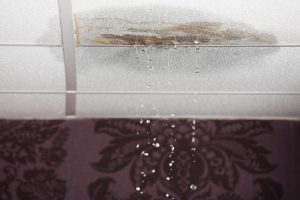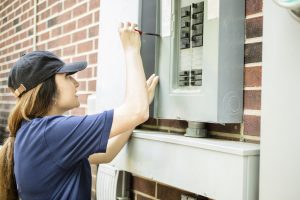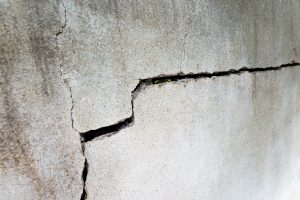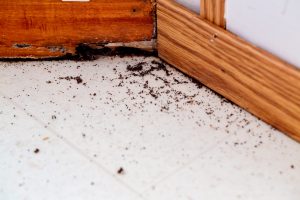Buying a home is a significant milestone in one’s life, often representing a culmination of hard work and dreams. However, amidst the excitement of finding the perfect property, it’s essential not to overlook the importance of a thorough home inspection. Beyond simply assessing the condition of the home, a comprehensive inspection offers valuable insights for both prospective buyers and homeowners seeking insurance coverage. Let’s delve deeper into why home inspections are more than just a routine step in the purchasing process.
The Home Inspection Process: Unveiling the Hidden Details
A home inspection is a comprehensive examination of a property’s condition, typically conducted by a certified inspector. The purpose is to identify any existing or potential issues that may impact the home’s safety, functionality, or value. The process involves a detailed assessment of various components, including:
- Structural Integrity: Inspectors evaluate the foundation, walls, roof, and overall structural components to ensure they meet safety standards.
- Electrical Systems: Assessing the electrical wiring, outlets, and the main electrical panel is crucial for preventing potential fire hazards.
- Plumbing: Checking for leaks, evaluating the hot water tank, and ensuring proper drainage are key aspects of the plumbing inspection.
- HVAC Systems: Examining the heating, ventilation, and air conditioning systems helps identify issues that may affect indoor comfort and energy efficiency. Note, in the winter time, and inspector is not able to test the air conditioning due to the outdoor temperature.
- Roof and Attic: A crucial aspect of the inspection involves checking the roof for any signs of damage and evaluating the attic to ensure proper insulation and ventilation. Additionally, the inspector will inform you about any presence of critters in the attic and provide guidance on securing the exterior of the home to restrict access for wildlife.
- Appliances: Ensuring that major appliances, such as the stove, dishwasher, washer, dryer, and HVAC units, are in working order.
Common Issues Uncovered During Home Inspections
During a home inspection, various issues may come to light, including:
-
Water Damage:

Water damage is a pervasive issue that can have serious consequences if not addressed promptly. During a home inspection, inspectors meticulously search for signs of water intrusion, such as leaks, water stains, or mold growth. These indicators may seem minor at first glance but can signify underlying problems that could compromise the structural integrity of the home over time.
Leak Detection: Inspectors will examine plumbing fixtures, including faucets, sinks, toilets, and showers, for any signs of leaks. They may also inspect areas prone to water intrusion, such as basements, crawl spaces, and around windows and doors.
Mold Inspection: Mold thrives in damp, humid environments and can proliferate rapidly if left unchecked. Inspectors will carefully assess areas susceptible to mold growth, such as bathrooms, kitchens, and poorly ventilated spaces. They may use specialized tools, such as moisture meters and thermal imaging cameras, to detect hidden moisture and potential mold colonies.
Consequences of Water Damage: Water damage can compromise the structural integrity of the home, leading to rot, decay, and mold infestation. It can also contribute to health issues, such as respiratory problems and allergies, for occupants. Addressing water damage promptly is crucial to prevent further deterioration and costly repairs down the line.
-
Faulty Wiring:

Faulty wiring poses significant safety hazards, including the risk of electrical fires and electrocution. During a home inspection, inspectors thoroughly evaluate the electrical system to identify any wiring defects, outdated components, or code violations.
Inspection of Electrical Components: Inspectors will examine the main electrical panel, circuit breakers, wiring connections, outlets, and switches for signs of wear, damage, or improper installation. They may also test the functionality of Ground Fault Circuit Interrupters (GFCIs) and Arc Fault Circuit Interrupters (AFCIs) to ensure they provide adequate protection against electrical hazards.
Code Compliance: Inspectors will verify that the electrical system meets current safety standards and building codes. They may identify issues such as overloaded circuits, inadequate wiring, or exposed electrical conductors that require correction by a licensed electrician.
Fire Safety: Faulty wiring is a leading cause of residential fires. By identifying and addressing electrical issues during the inspection process, homeowners can mitigate the risk of fire hazards and ensure the safety of their property and occupants.
-
Plumbing Problems:

Plumbing issues can range from minor leaks to major system failures, affecting the functionality and livability of the home. During a home inspection, inspectors thoroughly evaluate the plumbing system to identify any leaks, clogs, or deficiencies that require attention.
Leak Detection: Inspectors will examine visible plumbing fixtures, such as sinks, toilets, showers, and water heaters, for signs of leaks or corrosion. They may also inspect accessible plumbing lines, including supply pipes, drain lines, and sewer lines, for evidence of water damage or deterioration.
Water Pressure and Flow: Inspectors may test the water pressure and flow rate at various fixtures throughout the home to assess the performance of the plumbing system. Low water pressure or inconsistent flow may indicate underlying issues, such as clogged pipes or inadequate supply lines.
Functional Testing: Inspectors may operate plumbing fixtures and appliances, such as faucets, toilets, showers, and dishwashers, to ensure they function properly and do not exhibit any signs of malfunction or deterioration.
Code Compliance: Inspectors will verify that the plumbing system complies with local building codes and regulations. They may identify issues such as improper installation, outdated materials, or non-compliant fixtures that require correction by a licensed plumber.
-
Structural Deficiencies:

Structural deficiencies encompass a wide range of issues that can compromise the stability and safety of the home. During a home inspection, inspectors carefully evaluate the foundation, walls, roof, and other structural components to identify any signs of deterioration, damage, or inadequate construction.
Foundation Inspection: Inspectors will assess the condition of the foundation, including cracks, settling, or moisture intrusion, which can indicate structural instability or foundation failure. They may also examine the grading and drainage around the home to ensure water is directed away from the foundation to prevent moisture-related issues.
Wall and Roof Inspection: Inspectors will inspect the walls and roof for any signs of structural damage, such as cracks, bowing, or sagging. They may also assess the condition of roofing materials, flashing, and gutters to identify potential leaks or water damage that could compromise the integrity of the structure.
Structural Load-Bearing Elements: Inspectors will evaluate load-bearing elements, such as beams, columns, and support posts, to ensure they are structurally sound and capable of supporting the weight of the home. They may also look for signs of damage or deterioration that could compromise the structural integrity of the building.
Code Compliance: Inspectors will verify that the structural components of the home comply with applicable building codes and regulations. They may identify issues such as inadequate support, improper framing, or non-compliant construction practices that require correction by a qualified contractor or engineer.
-
Pest Infestations:

Pest infestations, such as termites, rodents, or insects, can cause extensive damage to the structure and integrity of the home if left unchecked. During a home inspection, inspectors will search for signs of pest activity and damage, as well as conditions conducive to infestations.
Visual Inspection: Inspectors will visually inspect accessible areas of the home, including basements, crawl spaces, attics, and exterior surfaces, for signs of pest infestations, such as droppings, gnaw marks, or damage to wood and insulation.
Moisture and Wood Damage: Inspectors will look for evidence of moisture intrusion, which can attract pests like termites and promote fungal growth. They may also inspect wooden structural elements, such as framing, beams, and joists, for signs of wood rot or deterioration caused by pests.
Preventive Measures: Inspectors may recommend preventive measures to reduce the risk of pest infestations, such as sealing cracks and gaps in the foundation, installing screens on windows and vents, and maintaining proper ventilation and drainage around the home.
Professional Pest Inspection: In some cases, inspectors may recommend a professional pest inspection by a licensed exterminator or pest control specialist to assess the extent of the infestation and recommend appropriate treatment measures.
By thoroughly examining these common issues during the home inspection process, buyers and sellers can make informed decisions about the property and take proactive steps to address any issues that may arise. Whether it’s water damage, faulty wiring, plumbing problems, structural deficiencies, or pest infestations, early detection and remediation can help protect the investment and ensure the safety and well-being of the occupants.
For Buyers:
- Informed Decision-Making: A detailed inspection report is akin to having a roadmap of the property’s condition. It provides buyers with a comprehensive understanding of any existing issues, potential risks, and necessary repairs. Armed with this knowledge, buyers can make informed decisions about whether the property aligns with their expectations and budget. For example, if the inspection reveals significant structural issues or costly repairs, buyers can weigh the pros and cons and decide whether to proceed with the purchase or negotiate for repairs or a reduced price.
- Negotiation Leverage: One of the most significant benefits of a home inspection for buyers is the leverage it provides during negotiations. Uncovering issues during the inspection allows buyers to approach the seller with evidence-based requests for repairs or concessions. Whether it’s addressing safety concerns, repairing structural defects, or upgrading outdated systems, buyers can negotiate for necessary improvements to ensure the home meets their standards. Additionally, the inspection report serves as a bargaining tool, providing tangible evidence to support their requests and potentially leading to a more favorable outcome in negotiations.
- Crucial Information for Your Insurer: Beyond aiding in the decision-making process, the home inspection also furnishes crucial information that buyers’ insurers may require. Insurance providers often request a detailed inspection report to assess the property’s risk profile and determine appropriate coverage options and premiums. By providing insights into the condition of the home, including any potential hazards or liabilities, the inspection report helps insurers accurately evaluate the property and offer suitable coverage. This ensures that buyers have adequate protection in place to safeguard their investment and mitigate potential risks.
For Sellers:
- Preventing Surprises: For sellers, a pre-listing inspection can be a proactive measure to prevent surprises during the selling process. By conducting an inspection before listing the property on the market, sellers can identify and address any issues or deficiencies upfront. This allows them to make necessary repairs or improvements to enhance the property’s appeal and marketability. By addressing potential concerns in advance, sellers can minimize the risk of last-minute negotiations or deal-breakers that could derail the sale. Ultimately, a pre-listing inspection empowers sellers to present their home in the best possible light and streamline the selling process.
- Enhancing Marketability: A well-maintained home with a clean inspection report is inherently more attractive to potential buyers. By showcasing a property that has been thoroughly inspected and deemed in good condition, sellers can instill confidence and trust in prospective buyers. A positive inspection report serves as a testament to the property’s quality and integrity, reassuring buyers that they are making a sound investment. Additionally, by addressing any identified issues or concerns, sellers demonstrate their commitment to transparency and integrity, which can help differentiate their property in a competitive market. Ultimately, a clean inspection report can significantly enhance the marketability of the home, attracting more interest and potentially leading to a faster and smoother sale process.
In summary, a thorough home inspection is a vital step in the real estate transaction process, offering invaluable benefits for both buyers and sellers. From empowering informed decision-making and providing negotiation leverage to enhancing marketability and preventing surprises, the inspection serves as a cornerstone of a successful and transparent transaction. By prioritizing a comprehensive inspection, buyers and sellers alike can navigate the complexities of the real estate market with confidence and peace of mind.
About Vanessa Martin
As a client-first and highly accomplished realtor with Exit Excel Realty, Vanessa Martin has established a reputation for being a trusted resource for selling and buying throughout the Ottawa region. With extensive experience and a strong real estate network, Vanessa is dedicated to surpassing expectations with caring, personalized service, integrity, and honesty. Whether you’re a first-time buyer, seasoned investor, or looking to sell, reach out to Vanessa for all your real estate needs. Vanessa is confident in meeting and exceeding your expectations.
Stay informed and consult with Vanessa Martin to navigate the market effectively and achieve your real estate goals.
Learn more about Vanessa Martin
REALTOR®. Member of The Canadian Real Estate Association and more.



